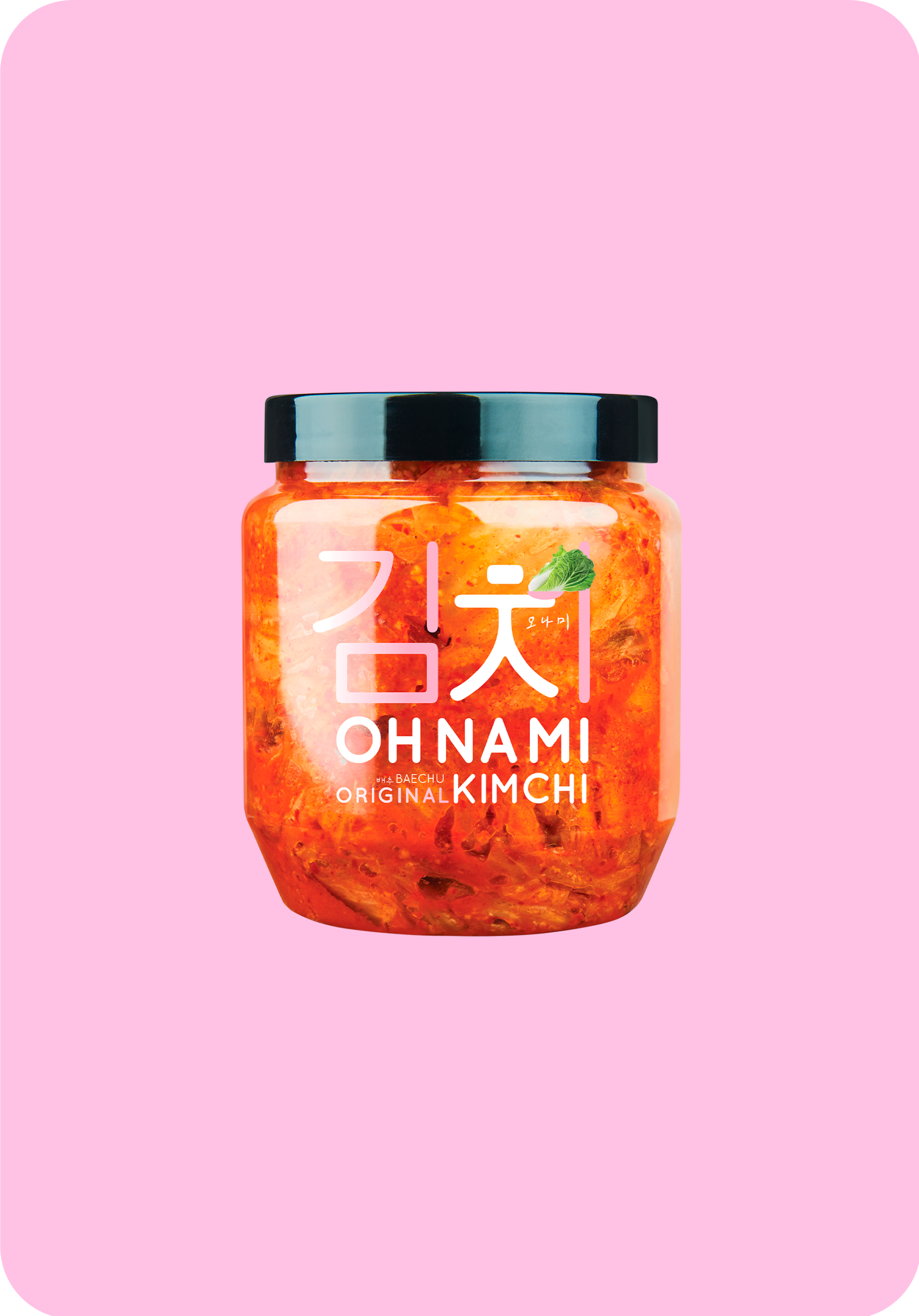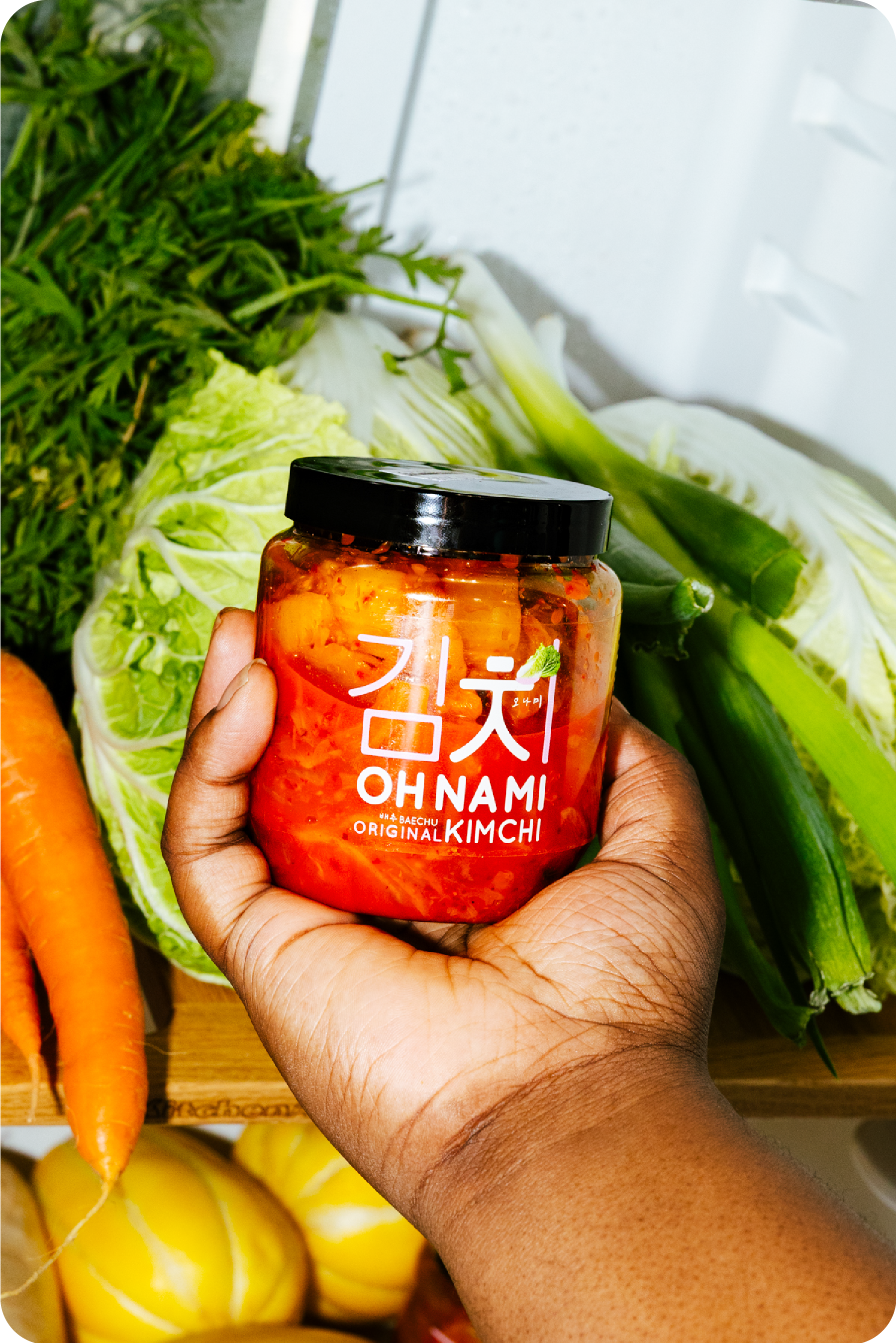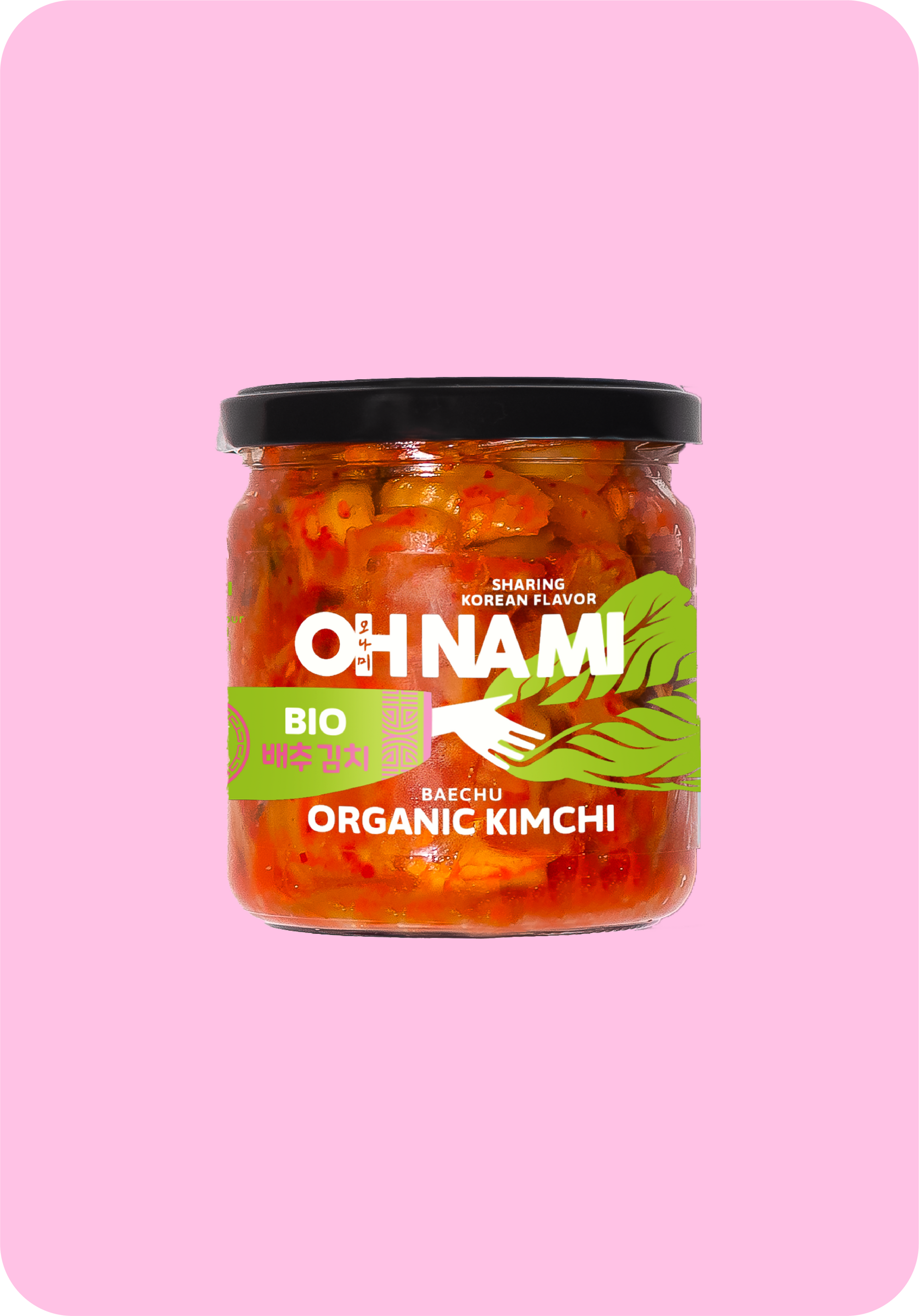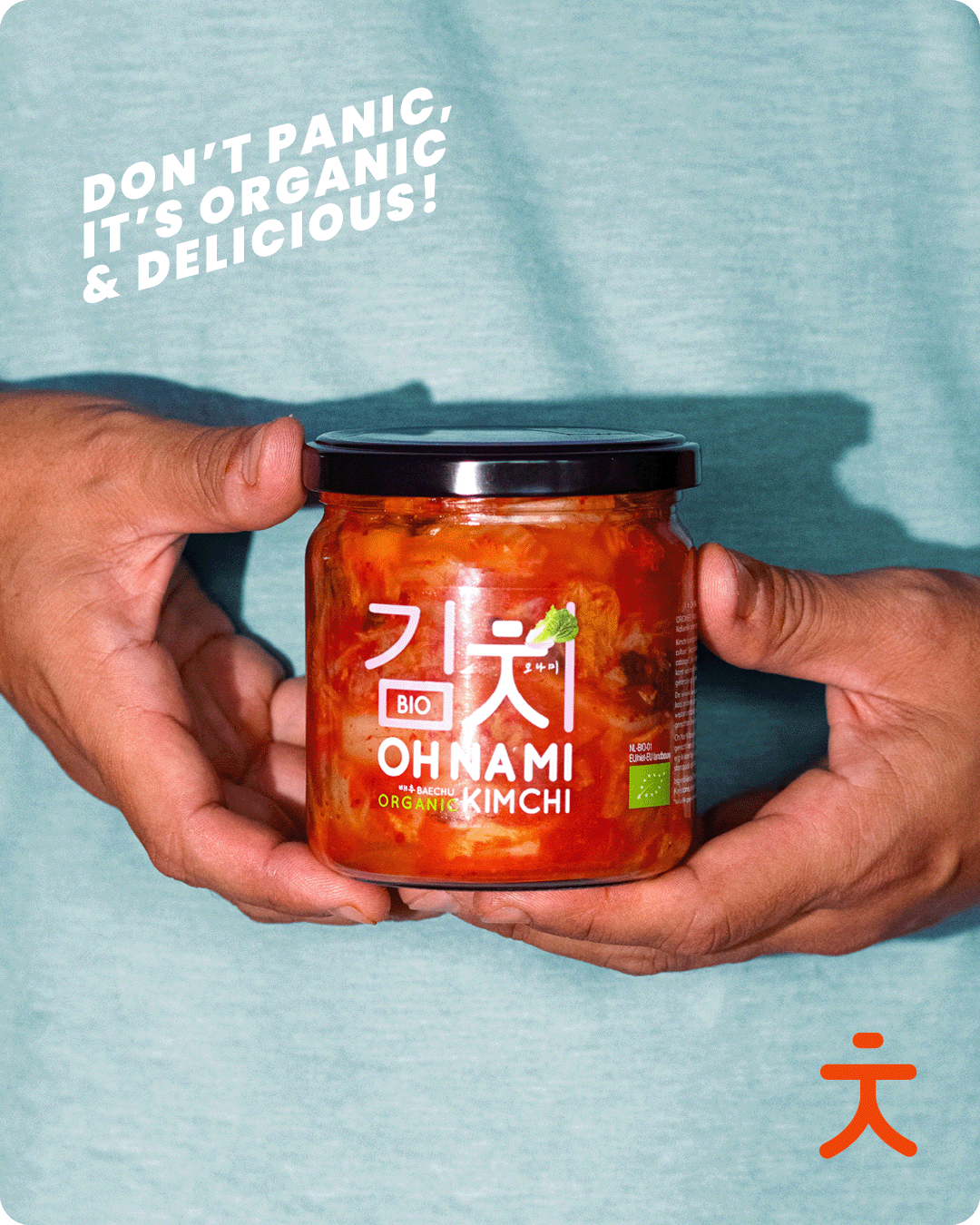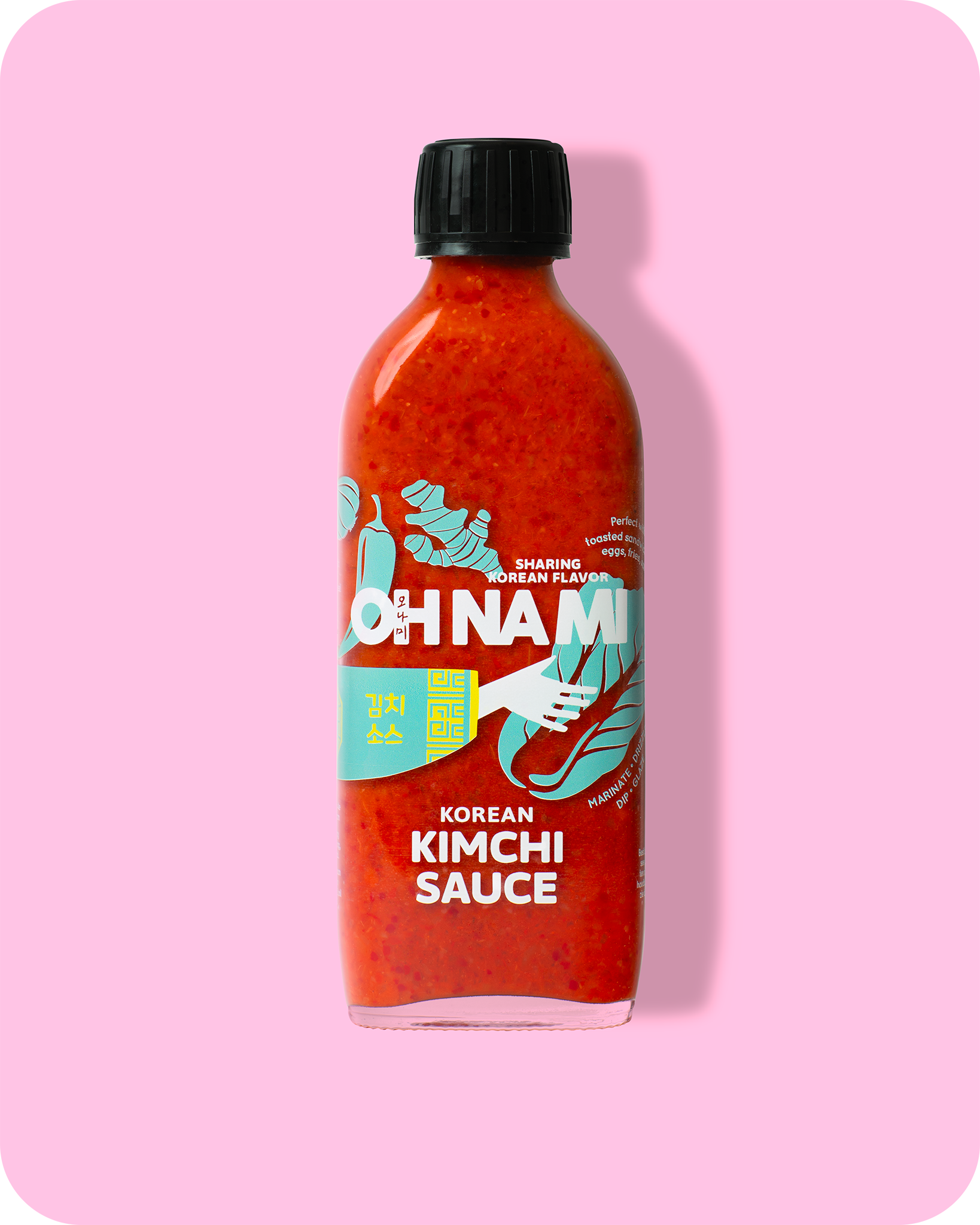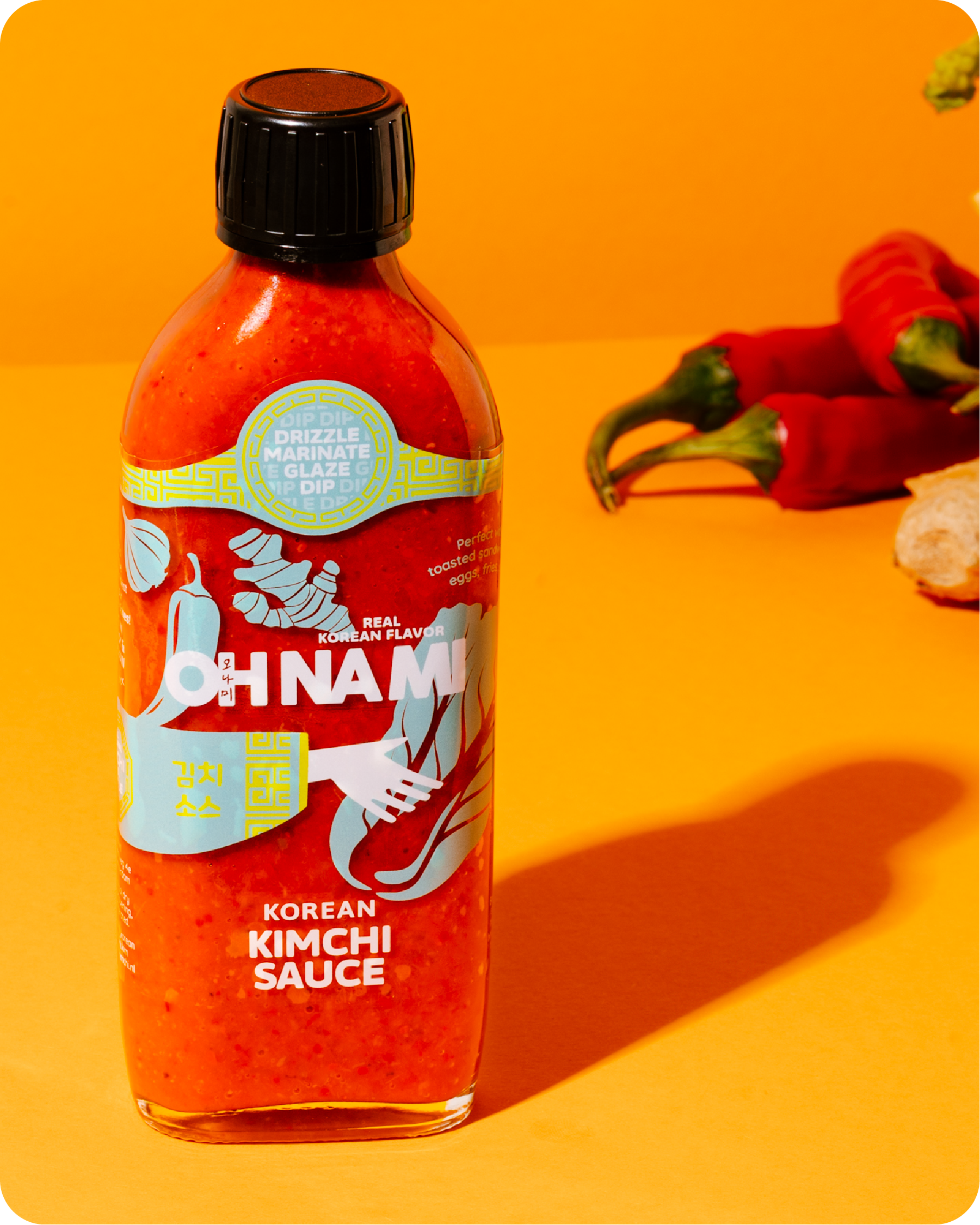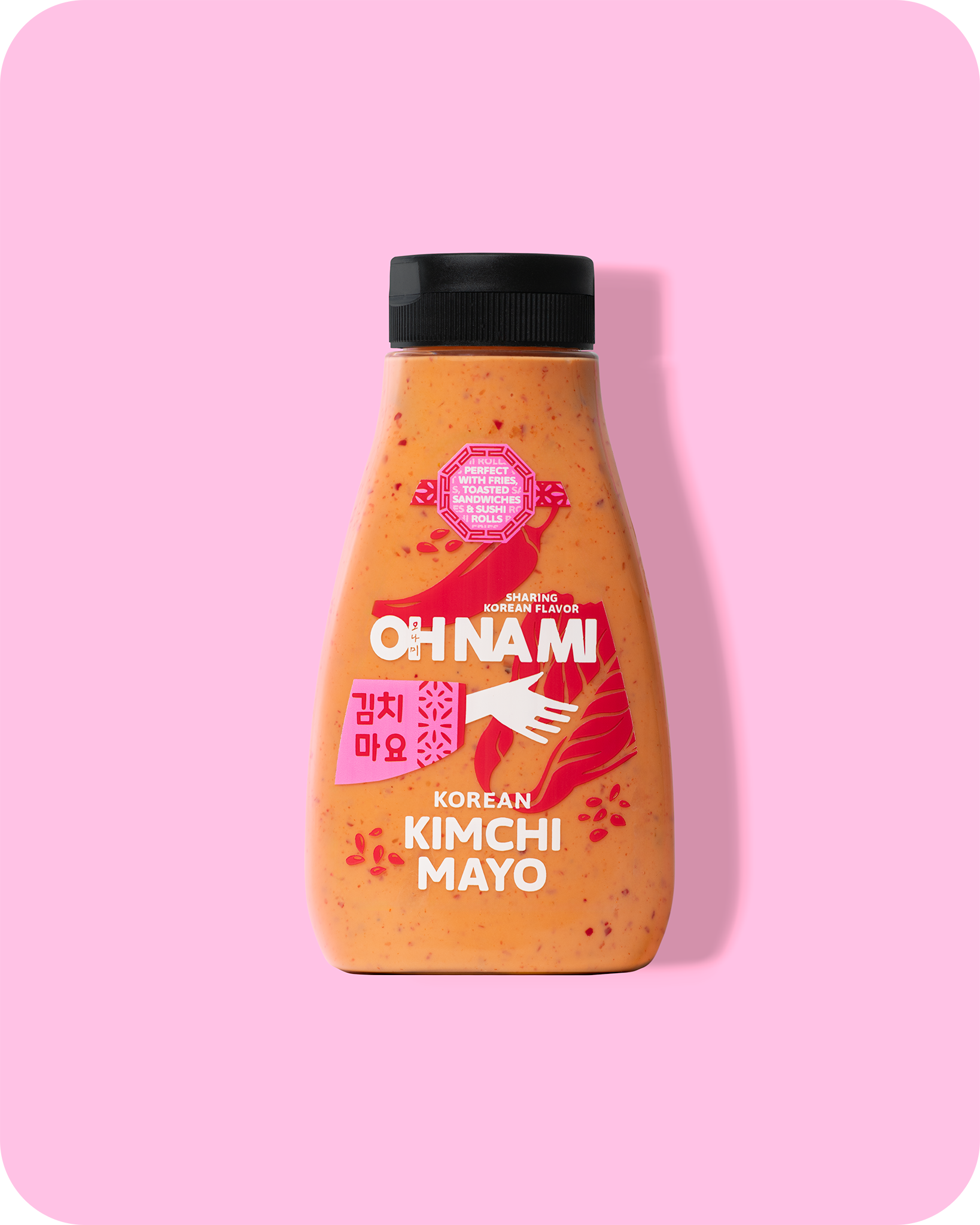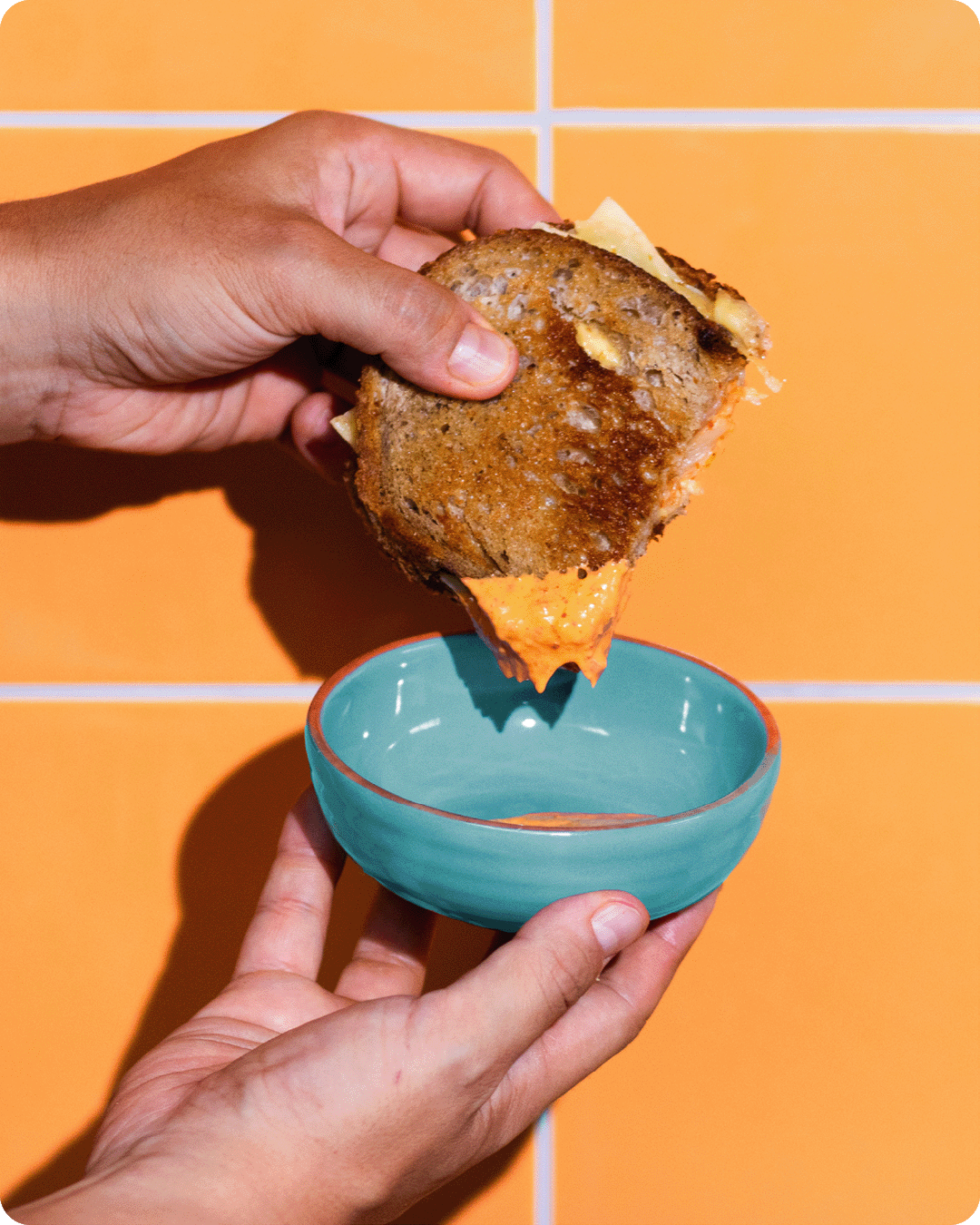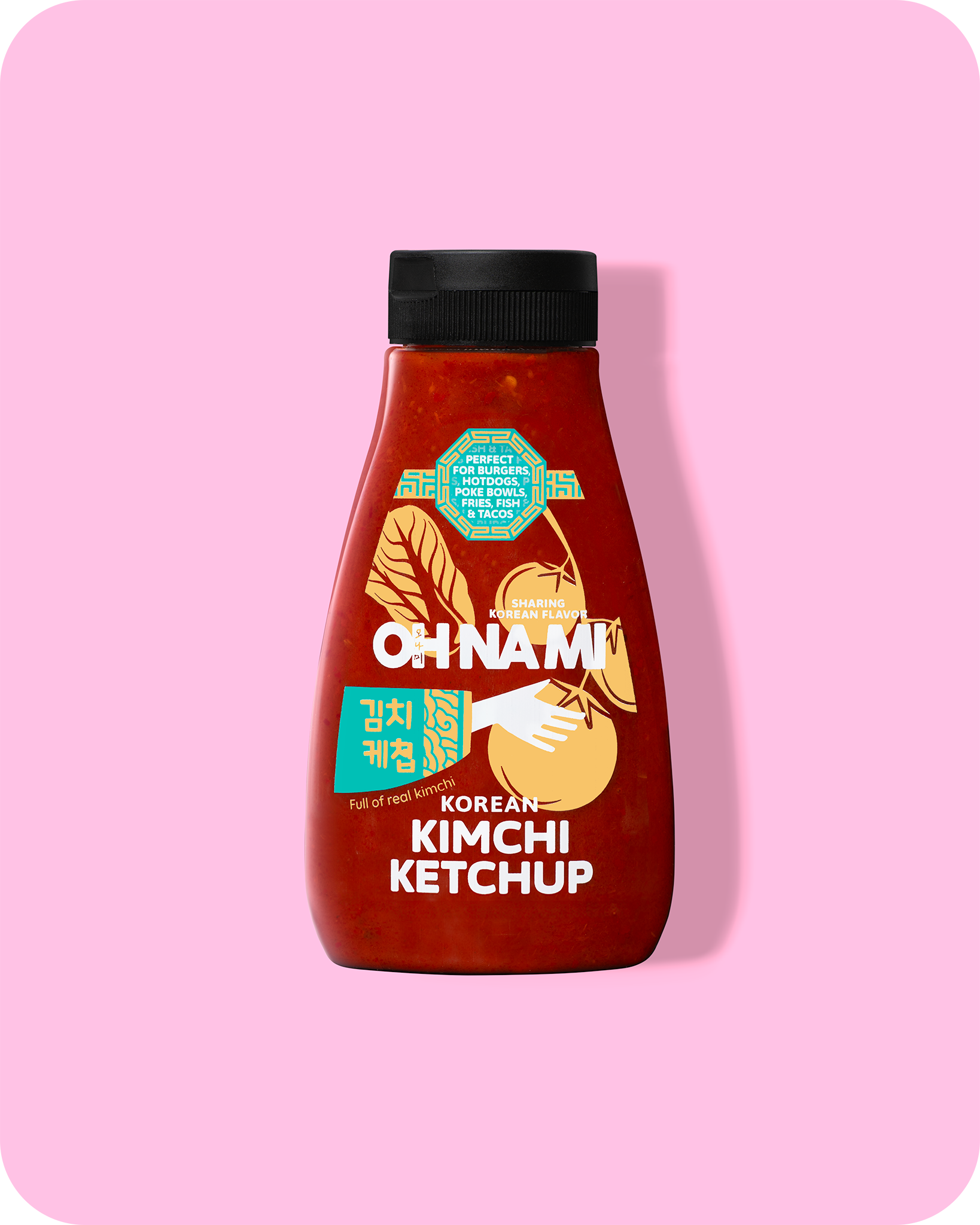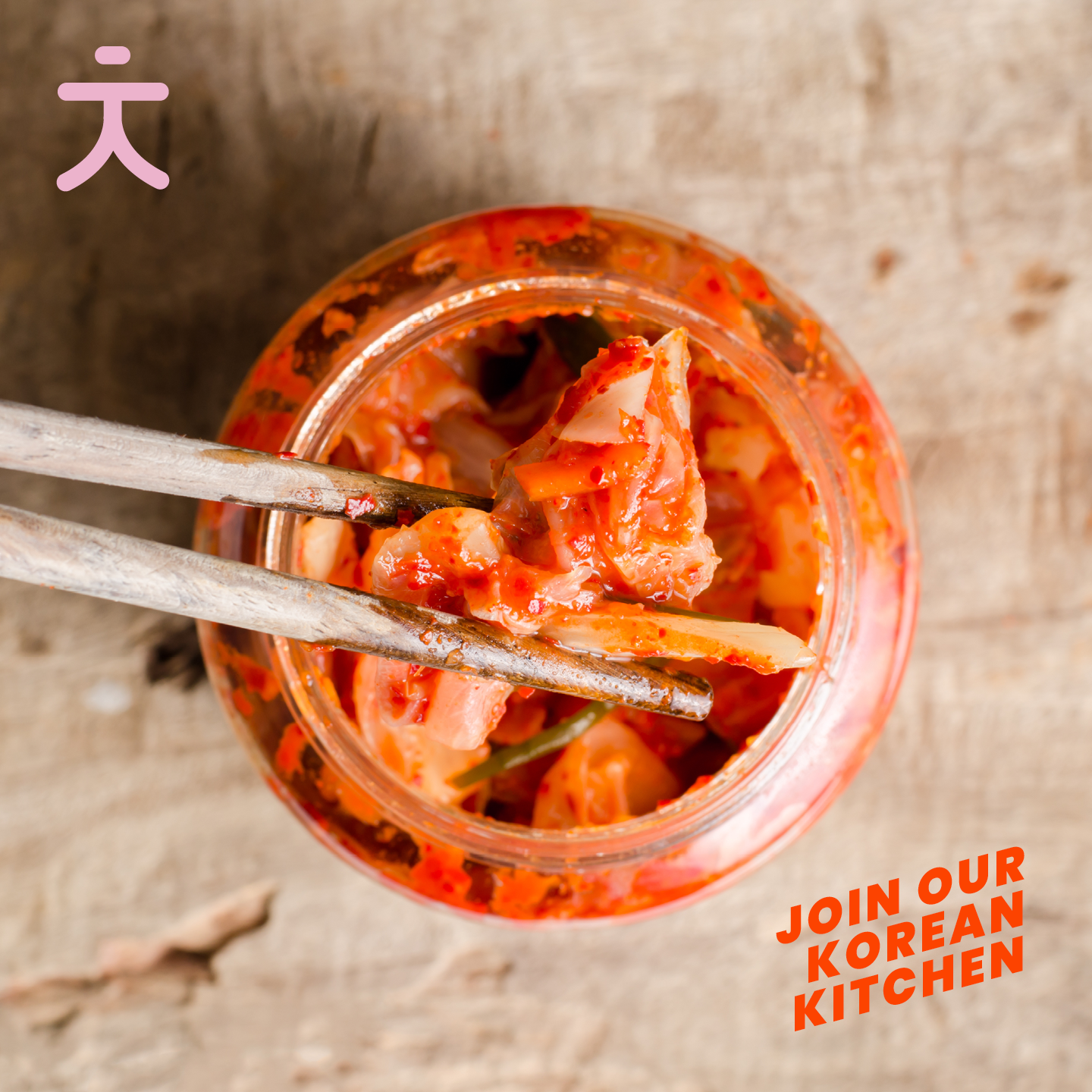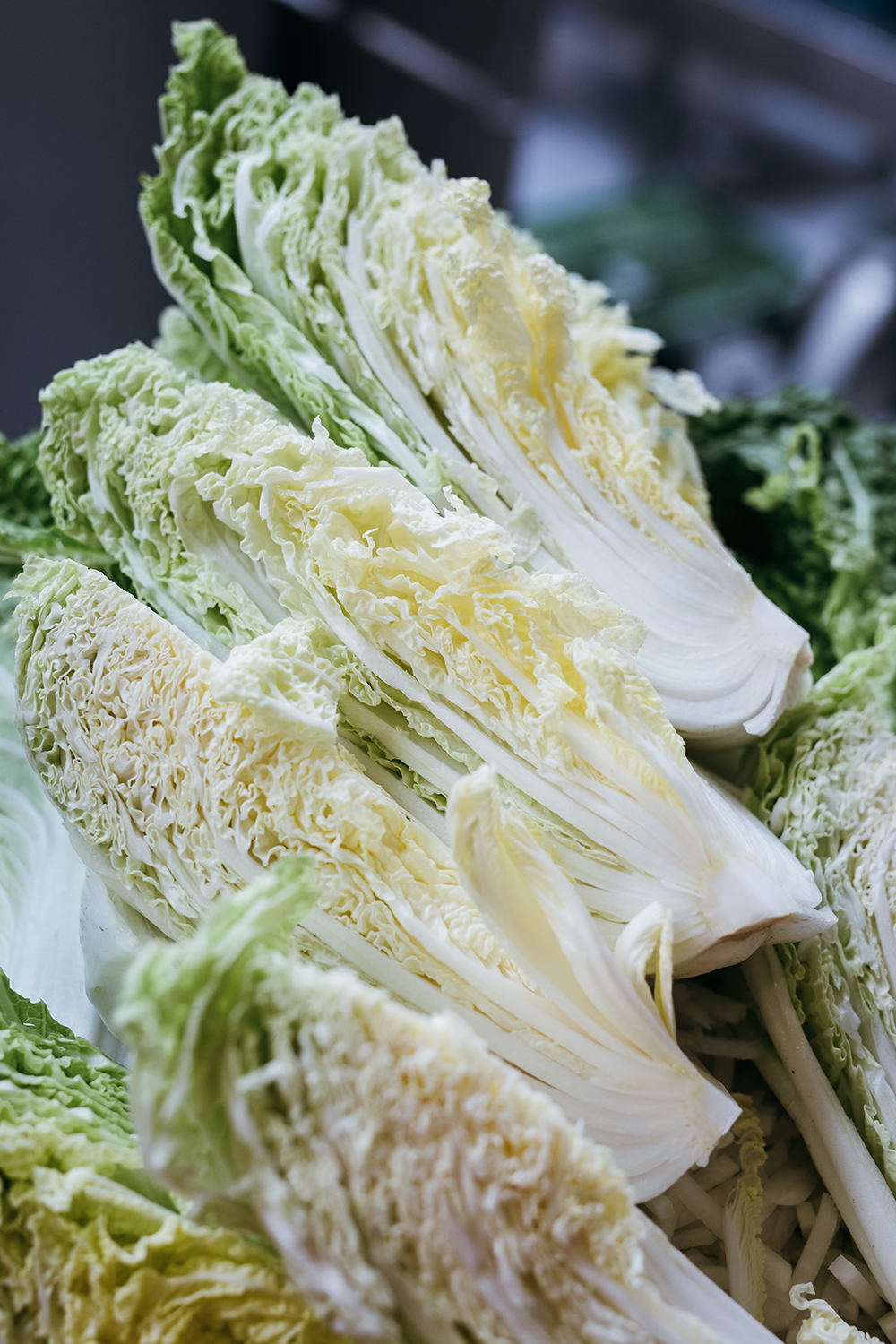
Our guide showcasing 10 different types of kimchi
Remember when explaining kimchi was a regular occurrence? 'Wait, what's kimchi? How does it taste? How do I eat it?' We've all been there. Like that one time we made a kimchi tosti for a friend—cheese and kimchi packed into one delicious bite. Her reaction? 'Hmm, the sauce is okay, but what's with the crunchy part? Why veggies on a tosti?' Kimchi was once strange, unfamiliar, and puzzling in the kitchen.
Fast forward 10 years, and kimchi is everywhere—on menus, in supermarkets, recipe books, and food festivals. Most folks are familiar with baechu kimchi, made from Chinese cabbage (napa cabbage). But did you know there's a world of kimchi flavors beyond that? Oh Na Mi used to offer three other varieties, though maybe we were a bit ahead of our time. Perhaps they'll make a comeback!
Curious about the diverse world of kimchi? We've got you covered.
Dive into our guide showcasing 10 different types of kimchi!
1. Baechu kimchi
Baechu kimchi, often simply called "kimchi," is a staple in Korean cuisine that everyone knows. It's made by salting and rinsing cabbage leaves, then packing and coating them with a mixture of hot red pepper flakes, onion, garlic, ginger, green onions, and optionally fish sauce, shrimp, or oysters, and Asian chives. At Oh Na Mi, our versions are vegan, so we skip the fish.
The prepared kimchi is then stored in a container to ferment, where it can be kept for months or longer, especially if stored in the fridge instead of the traditional method of burying it in the backyard during winter.
Each family has their preferred stage of baechu kimchi fermentation. It can be enjoyed fresh, juicy, and delicious when newly made. As it ages, it becomes more sour and better fermented, offering a range of flavors to suit different tastes.
2. Beak Kimchi; White kimchi
Baek kimchi, meaning "white kimchi," is similar to nabak kimchi because both are not spicy and lack the red color common in many kimchis. Made from Napa cabbage, baek kimchi is white because it contains no gochugaru (Korean red chili pepper flakes). Its mild taste makes it perfect for elders, young kids, or anyone who doesn't like spicy foods.
Baek kimchi can be made with or without fish sauce and rice flour. Due to its simplicity, high-quality ingredients can really stand out. Chestnuts and jujubes are often stuffed between the cabbage leaves to add flavor and texture. Some believe that the absence of chili in baek kimchi suggests it is an older variety, as red chili peppers were introduced to Korea only after the 16th century, long after kimchi had already become a staple.
3. Kkakdugi (Cubed Radish Kimchi)

Back to the song of fire and spice. Kkakdugi is made from cubed Korean radish (mu), which is large and bulbous, white with a green end, and typically found in Asian grocery stores. This kimchi is prepared using similar ingredients and methods as baechu kimchi, but kkakdugi stands out for being especially juicy and crunchy.
Kkakdugi pairs wonderfully with almost anything, but it is traditionally served with seolleongtang, a milky-white soup made from ox bones and brisket. The combination of the crunchy, spicy radish and the rich, comforting soup creates a delightful balance of flavors and textures.
4. Oi Sobagi (Cucumber Kimchi)
Oi sobagi (“stuffed cucumber”) is a refreshing, crisp, and spicy variation on the general kimchi theme. Small Kirby (pickling) or Korean cucumbers are sliced in quarters lengthwise, keeping one end intact, and the resulting pocket is stuffed with finely chopped vegetables like carrot, onion, sometimes radish, ginger, and garlic. It’s good for summer and not meant to be stored for a long time—just a few days. It goes well with soups and stews.
Want to make your own? We have an Oi Sobagi recipe for you!
5. Pa Kimchi
Pa kimchi, also known as green onion kimchi, is easy to make. It's typically prepared and enjoyed in the spring when jjokpa, a Korean green onion, is in season. Jjokpa is thinner than most green onions, with dark leaves and small white bulbs at the end. If you can't find jjokpa, you can use thin silpa scallions, which are tender, early-harvested standard scallions, as a good alternative.
The key ingredients in pa kimchi are fish sauce and gochugaru (Korean red chili pepper flakes), along with sugar, garlic, and ginger. Sometimes, dried squid or mareun ojingeo, is added to enhance the flavor with umami and add a chewy texture that contrasts with the crunchy green onions. For a vegan version, you can substitute fish sauce with soy sauce. After coating the green onions in the spice mix, you can tie them together using their long stems for easier storage and eating. Alternatively, you can chop the onions into bite-sized pieces before mixing them with the spices.
Pa kimchi can be eaten immediately, but letting it ferment for a couple of weeks will enhance its spicy and robust flavor.
6. Dongchimi (Radish Water Kimchi)
Let's talk about dongchimi, a type of watery kimchi that’s perfect for winter. The name “dongchimi” actually comes from "dongchi," the Korean term for the winter solstice. It's like food and a beverage all in one!
Dongchimi is made with small, round radishes or regular mu radishes cut into small pieces. These radishes are salted and combined with plenty of water, peppers, garlic, ginger, and chunks of Korean pear. Store this mixture in a big covered jar, and as it ferments, it creates a fizzy, sweet-sour liquid that's delicious on its own or with the vegetables.
You can also use dongchimi as the base for a refreshing dish of cold noodles (dongchimi guksu) or for rice in broth. This kimchi is especially popular in the winter months, providing a light and tangy contrast to heavier winter foods.
7. Gat (Mustard Leaf) Kimchi
Gat kimchi is made from Jeolla Do mustard leaves, a type of wild mustard leaves from the Jeolla Do province in Korea. These leaves are large, rough, and purplish, similar in texture to kale. They have a crunchy, slightly bitter, and earthy flavor. While Jeolla Do mustard leaves are preferred, you can also use peppery Chinese mustard greens, known as gai choy. For gat kimchi, the variety of gai choy with wide, luscious stems is ideal.
To make gat kimchi, the mustard greens are first soaked in a saltwater brine, much like the Napa cabbage used in baechu kimchi. Next, a rice flour slurry is prepared and mixed with key ingredients: gochugaru (Korean red chili pepper flakes), fish sauce, and saeujeot (fermented shrimp), along with vegetables like carrots, chives, and scallions. This vegetable-spice paste is carefully spread onto each mustard green leaf, which is then left to ferment until it develops pungent and acidic flavors.
Gat kimchi pairs wonderfully with meats and stews, adding a unique and flavorful kick to your meal.
8. Bossam Kimchi

Bossam, a popular Korean dish, means "wrapped" and typically features boiled pork belly and accompaniments wrapped in lettuce leaves. Bossam kimchi is unique in its preparation and ingredients. Different regions in Korea have their own kimchi varieties based on local ingredients. Bossam kimchi originates from Gaeseong in the Gyeonggi-do Province, where luxurious ingredients like pine nuts, jujubes, seafood, and pears are common. This makes bossam, or ssam kimchi, a special delicacy.
Bossam kimchi is traditionally made with Gaeseong cabbage leaves, which are wider than other types. These leaves are soaked in a salt brine and then filled with a mix of seafood (such as baby octopus and oysters), nuts, green onions, mushrooms, ginseng, fruits, watercress, and other aromatics. The filling is mixed with the usual kimchi ingredients: gochugaru (Korean red chili pepper flakes), fish sauce, and saeujeot (fermented shrimp).
To assemble bossam kimchi, the filling is placed on a single cabbage leaf, which is then wrapped into a bundle and served in a bowl. Due to its rich and varied fillings, bossam kimchi is considered one of the most nutritious types of kimchi. Its luxurious ingredients make it a dish often reserved for special occasions and holidays.
9. Buchu Kimchi
Buchu kimchi is a great "first" kimchi to try if you're new to making fermented vegetables at home. Buchu, or garlic chive kimchi, is usually made with Korean garlic chives, which are thinner and more tender than Chinese garlic chives. It's a popular summer kimchi in southern Korea.
These garlic chives have a zesty, onion-like flavor and need very few ingredients to become kimchi. You'll need rice flour, gochugaru (Korean red chili pepper flakes), fish sauce, and saeujeot (fermented shrimp). If you don't have saeujeot, you can use extra fish sauce instead. The chives don't need to be pre-salted either.
To make buchu kimchi, simply massage the spice paste onto the garlic chives and let them ferment at room temperature for a couple of hours. Wait a little and you have tangy kimchi. Buchu kimchi can be eaten within a few hours or left to ferment for a couple of weeks for a deeper flavor.
10. Chonggak-kimchi

Chonggak-kimchi, also known as "ponytail kimchi," is a unique type of kimchi made with chonggakmu radishes. These radishes are firm and crispy, while their greens are soft, creating a delightful contrast of textures. Unlike many other varieties of radish, chonggakmu is primarily found in Korea.
Chonggak-kimchi has a long history in Korean cuisine. Its name comes from the long, ponytail-like greens of the radish. Traditionally, this kimchi is enjoyed during the harvest season, symbolizing abundance and the joy of gathering. The combination of the crunchy radish and tender greens makes it a special treat.
This kimchi pairs wonderfully with a bowl of steamed rice, adds a refreshing crunch to Korean BBQ, and complements hearty stews and soups. It's also delicious as a standalone side dish, showcasing its unique flavors and textures.
If you're looking to try a distinctive and authentic Korean kimchi, give chonggak-kimchi a try. Its rich history and unique taste offer a wonderful glimpse into Korea's culinary heritage.


